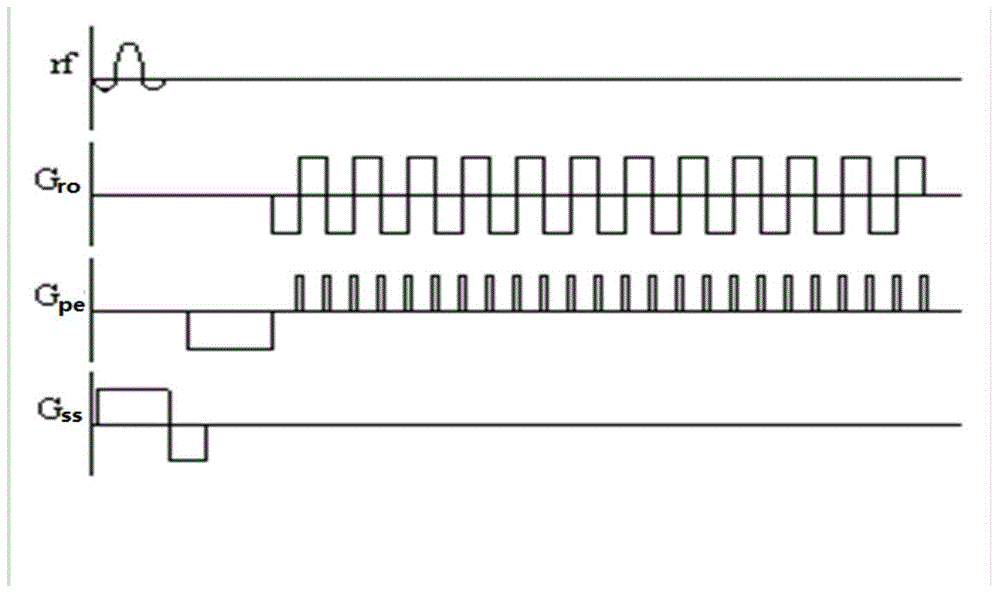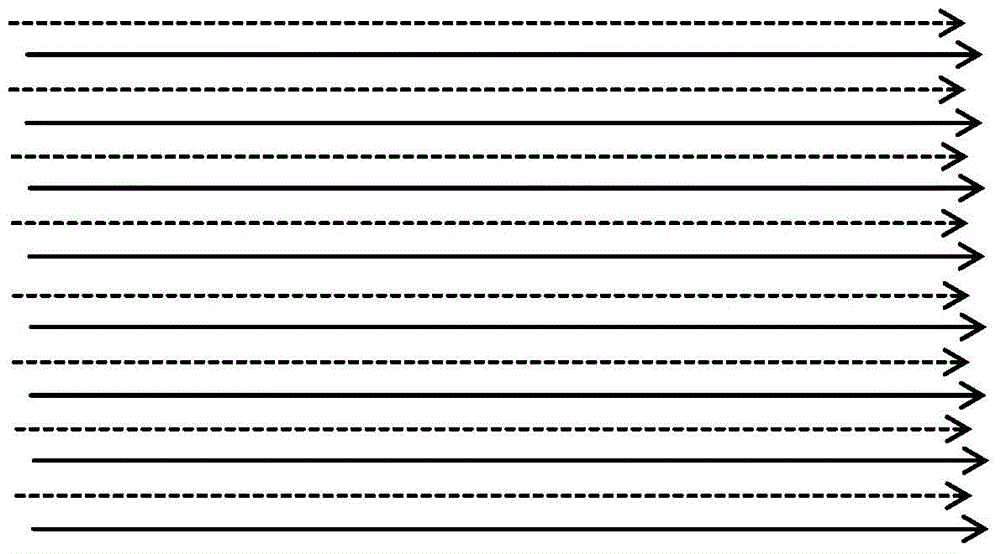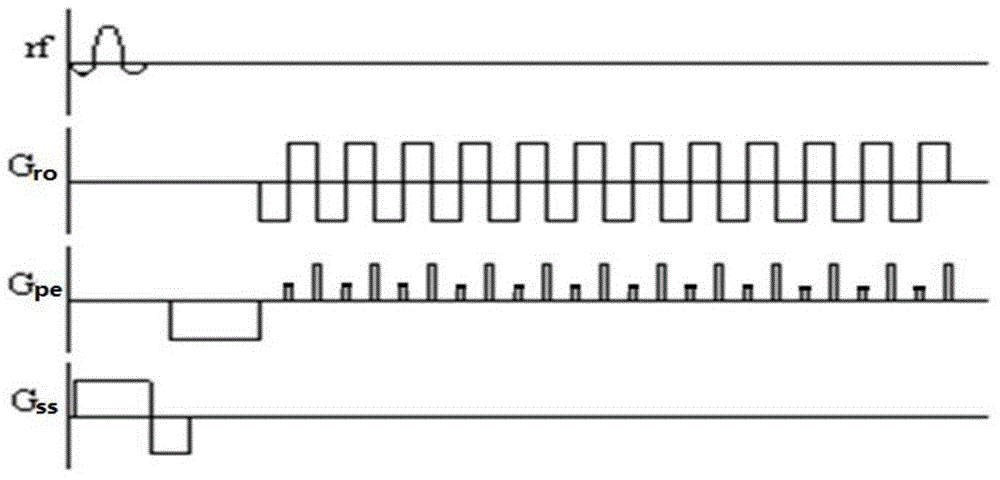Echo planar imaging method and device
An echo-planar imaging and imaging technology, which is used in measurement devices, measurement of magnetic variables, instruments, etc., can solve problems such as uneven distribution, uneven intensity distribution, and inability to obtain information, and achieve the effect of ensuring uniform distribution.
- Summary
- Abstract
- Description
- Claims
- Application Information
AI Technical Summary
Problems solved by technology
Method used
Image
Examples
Embodiment Construction
[0039] The present invention will be further described below in conjunction with the accompanying drawings and embodiments.
[0040] figure 1 Schematic diagram of the echo-planar imaging (EPI) sequence during non-tilted scanning. Gro, Gpe, and Gss are readout, phase encoding, and layer selection gradients, respectively. The K-space data collected in echo-planar imaging is continuously collected using the positive and negative polarities of the readout gradient, so as to achieve the effect of fast imaging. The k-space signal was acquired during the plateau of the readout gradient. figure 2 is the K-space of the echo-planar imaging (EPI) sequence when the scan is not tilted. When the scan is not tilted, the phase encoding gradient will not have a jump of parity, and the K-space data is evenly distributed in the phase encoding direction.
[0041] image 3 It is a schematic diagram of an echo-planar imaging (EPI) sequence during oblique scanning, and there are odd-even jumps...
PUM
 Login to View More
Login to View More Abstract
Description
Claims
Application Information
 Login to View More
Login to View More - R&D
- Intellectual Property
- Life Sciences
- Materials
- Tech Scout
- Unparalleled Data Quality
- Higher Quality Content
- 60% Fewer Hallucinations
Browse by: Latest US Patents, China's latest patents, Technical Efficacy Thesaurus, Application Domain, Technology Topic, Popular Technical Reports.
© 2025 PatSnap. All rights reserved.Legal|Privacy policy|Modern Slavery Act Transparency Statement|Sitemap|About US| Contact US: help@patsnap.com



